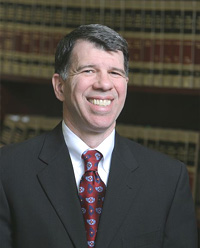Earlier this year, the Social Security Administration enacted several new regulations regarding Social Security disability benefits. One of these new rules involved the Appeals Council’s ability to review an Administrative Law Judge’s (ALJ) decision based upon additional evidence that was not submitted to the ALJ prior to the date of hearing. The Appeals Council is the Social Security’s appellate office that reviews appeals of hearing decisions.
The new rule is outlined in the Code of Federal Regulations §404.970. In order for the Appeals Council to accept an appeal based upon new additional evidence, the claimant must show that there was good cause for not informing the Social Security Administration about the additional evidence at least five business days before the date of the scheduled hearing. In addition to showing good cause, the additional evidence must be new, material, and related to the period of disability, and there must be a reasonable probability that the additional evidence would change the outcome of the ALJ’s decision.
Circumstances for Filing Additional Evidence
The Code of Federal Regulation states that “good cause” may exist in several circumstances:
- An action by the Social Security Administration misled the claimant into not filing the evidence in time.
- The claimant had a physical, mental, educational, or linguistic limitation that prevented them from informing Social Security Administration about or submitting the evidence earlier.
- Some other unusual, unexpected, or unavoidable circumstance beyond the claimant’s control prevented them from informing the Social Security Administration about or submitting the evidence earlier.
The final circumstance is essentially a catch-all provision that provides the ALJ discretion to accept evidence offered within 5 business days of the hearing. While the Code of Federal Regulations does not provide a complete list of situations that are acceptable under that provision, it does provide the following list of examples:
- The claimant was seriously ill and their illness prevented them from contacting the ALJ in person, in writing, or through a friend, relative, or other person about the existence of additional evidence.
- There was a death or serious illness in the claimant’s immediate family.
- The additional evidence was destroyed or damaged by fire or other accidental cause.
- The claimant actively and diligently sought evidence from a source and the evidence was received less than 5 business days prior to the hearing or not at all.
The Social Security Administration began requiring compliance with this rule on May 1, 2017.
When preparing for your Social Security hearing, it is always best practice to submit any and all available evidence before 5 business days prior to the hearing. When the claimant’s circumstances make doing so impossible, the new Social Security regulations provide a guideline for requesting a review before the Appeals Council based upon additional material evidence.
Need Help with a Disability Benefits Claim? Contact Us Today!
The disability lawyers at Andalman & Flynn make it a practice to stay up to date on new regulations and case law to provide the most effective representation to our clients. We normally provide free consultations for clients looking to file for a range of disability benefits. Please contact us for a free consultation today.
You may also be interested in:





